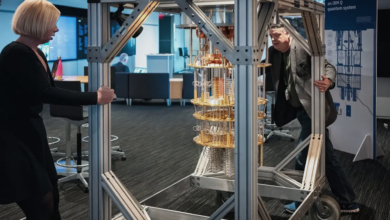Self-Driving Cars That Got Totally Lost And the Strange Places They Ended Up
Self-Driving Cars fails. Discover the strangest places autonomous vehicles got lost due to AI navigation errors and hilarious tech mishaps.

Self-driving cars represent one of the most exciting technological advancements of the 21st century, promising safer roads and more efficient transportation. However, despite their sophisticated artificial intelligence and sensor systems, these autonomous vehicles sometimes make baffling navigational errors, leading them into bizarre and unexpected situations. From parking on sidewalks to getting stranded in construction zones, these mishaps highlight the challenges of perfecting driverless technology. This article explores some of the most perplexing cases where self-driving cars got completely lost and ended up in absurd places, revealing both the limitations and the humor of AI-driven transportation.
While autonomous vehicles are designed to follow precise routes, real-world conditions often throw unpredictable obstacles in their path. Whether due to software glitches, misinterpreted traffic signs, or unexpected human behavior, these cars occasionally take detours into the unknown. Some have ignored police officers, others have driven into private property, and a few have even gotten stuck in places no human driver would ever go. Below, we delve into these strange incidents, examining what went wrong and what engineers are doing to prevent such mishaps in the future.
Self-Driving Cars That Got Totally Lost And the Strange Places
The Complex Navigation Challenges of Self-Driving Cars
Self-driving cars rely on a combination of GPS, LiDAR, radar, cameras, and machine learning algorithms to perceive their surroundings and make driving decisions. While these systems work seamlessly in controlled environments, real-world conditions such as sudden road closures, erratic pedestrians, or poorly marked lanes can confuse even the most advanced AI.
Common Issues
One of the most common issues occurs when autonomous vehicles misinterpret road markings. In one documented case, a self-driving car in Arizona repeatedly swerved into oncoming traffic because its sensors misread faded lane dividers. In another incident, an autonomous test vehicle in Pittsburgh became stuck in a dead-end street, unable to determine how to reverse out. These examples demonstrate how minor environmental inconsistencies can lead to major navigational failures.
Learning from Mistakes
The development of self-driving technology has been a process of continuous learning from mistakes. Each navigation error, misinterpreted obstacle, or unexpected accident provides valuable data that engineers use to refine algorithms and improve sensor systems. Companies now run thousands of simulated edge cases based on real-world failures to train AI systems to handle rare but critical scenarios.
When AI Ignores Human Commands
Unlike human drivers, self-driving cars do not always recognize or respond to emergency personnel or construction workers directing traffic. In a now-famous incident, a Tesla operating in Autopilot mode plowed through emergency tape at a crash scene because its system did not register the temporary barrier as an obstacle. Similarly, an autonomous Uber test vehicle in San Francisco once ignored a police officer’s hand signals.
Bizarre Places Where Self-Driving Cars Have Ended Up
Some self-driving cars have taken wrong turns into truly unusual locations. In California, an autonomous vehicle attempting to navigate a residential neighborhood ended up stranded on a narrow median strip, unable to move forward or backward without human intervention. In another case, a Waymo car mistakenly entered a private driveway, startling homeowners who found an empty vehicle parked in their yard.
Autonomous Vehicles
These incidents raise critical questions about how autonomous vehicles should prioritize external human instructions over pre-programmed rules. Engineers are now working on improving Artificial Intelligence ability to recognize and respond to human gestures, but the challenge remains significant.
The Future of Self-Driving Cars
Despite these mishaps, autonomous technology is improving rapidly. Companies are using machine learning to analyze past errors and enhance decision-making algorithms. Simulations now include rare but critical scenarios like erratic pedestrians or sudden road closures to better prepare self-driving systems. Regulators are also stepping in, mandating stricter safety protocols for autonomous vehicles.
Self-Driving Robot
Perhaps the most amusing incident involved a self-driving delivery robot in London that got lost in a park. The robot, designed to follow sidewalks, instead wandered onto a grassy field, repeatedly bumping into trees until rescue arrived. While these mishaps are often humorous, they highlight the need for more robust real-world testing before autonomous vehicles become mainstream.
Unusual Obstacles That Confuse Autonomous Systems
Not all navigation errors are due to software glitches sometimes, self-driving cars are thrown off by objects or situations they weren’t programmed to handle. One autonomous vehicle in Germany mistook a graffiti-covered stop sign for a speed limit sign, leading to a near-collision. Another car in Texas froze when it encountered a tumbleweed rolling across the road, interpreting it as an insurmountable obstacle.
Play Tricks
Even weather can play tricks on AI. Heavy rain or snow can interfere with LiDAR and cameras, reducing the car’s ability to “see” properly. In one case, a self-driving shuttle in Las Vegas got stuck in light snowfall because its sensors couldn’t distinguish between snowflakes and actual obstacles.
The Future of Autonomous Navigation
Despite these mishaps, self-driving technology is rapidly evolving. Companies are using machine learning to analyze past mistakes and improve decision-making algorithms. Advanced simulations now include rare but critical scenarios such as emergency detours, jaywalking pedestrians, and sudden roadblocks to better prepare autonomous systems for real-world unpredictability.
Safety Protocols
Regulators are also stepping in, mandating stricter safety protocols for autonomous vehicles. However, until these cars can reliably handle every possible edge case, human oversight remains essential. The road to full autonomy is filled with strange detours, but each mistake brings engineers closer to a future where self-driving cars navigate flawlessly.
Read More: Exploring the Effective Connection Between Gut Health and Overall Wellness 2023
Conclusion
Self-driving cars are undeniably revolutionary, yet their journey has been marked by unexpected and sometimes comical missteps. From ignoring traffic controllers to getting lost in parks, these vehicles have shown that AI still struggles with the unpredictability of human environments. While these incidents provide amusing anecdotes, they also serve as crucial learning opportunities for engineers refining autonomous technology.
As advancements continue, self-driving cars will likely become more reliable, but their occasional misadventures remind us that perfection takes time. Whether stranded on a median or confused by a tumbleweed, these vehicles highlight both the promise and the challenges of a driverless future. One thing is certain the path to full autonomy is anything but dull.
FAQs
Why do self-driving cars sometimes get lost?
They rely on sensors and AI that can misread road signs, construction zones, or unexpected obstacles, leading to navigation errors. They also struggle with unexpected obstacles or unusual road layouts that differ from their training data.
Have self-driving cars caused accidents?
Yes, some have been involved in collisions, often due to software glitches or failure to detect pedestrians or other vehicles. Typically due to sensor limitations or software misjudgments in complex traffic situations.
Can weather affect self-driving cars?
Yes, weather can affect self-driving cars. Heavy rain, snow, fog, or even bright sunlight can interfere with sensors like LiDAR and cameras, reducing their ability to navigate safely.
Are self-driving cars safer than human drivers?
Self-driving cars have the potential to be safer than human drivers by eliminating human errors like distraction and fatigue, but they still struggle with unpredictable real-world scenarios that require human judgment.
What’s being done to improve self-driving technology?
Companies are refining self-driving technology through advanced AI training, better sensor fusion, and real-world edge case testing. Regulators are implementing stricter safety standards.











